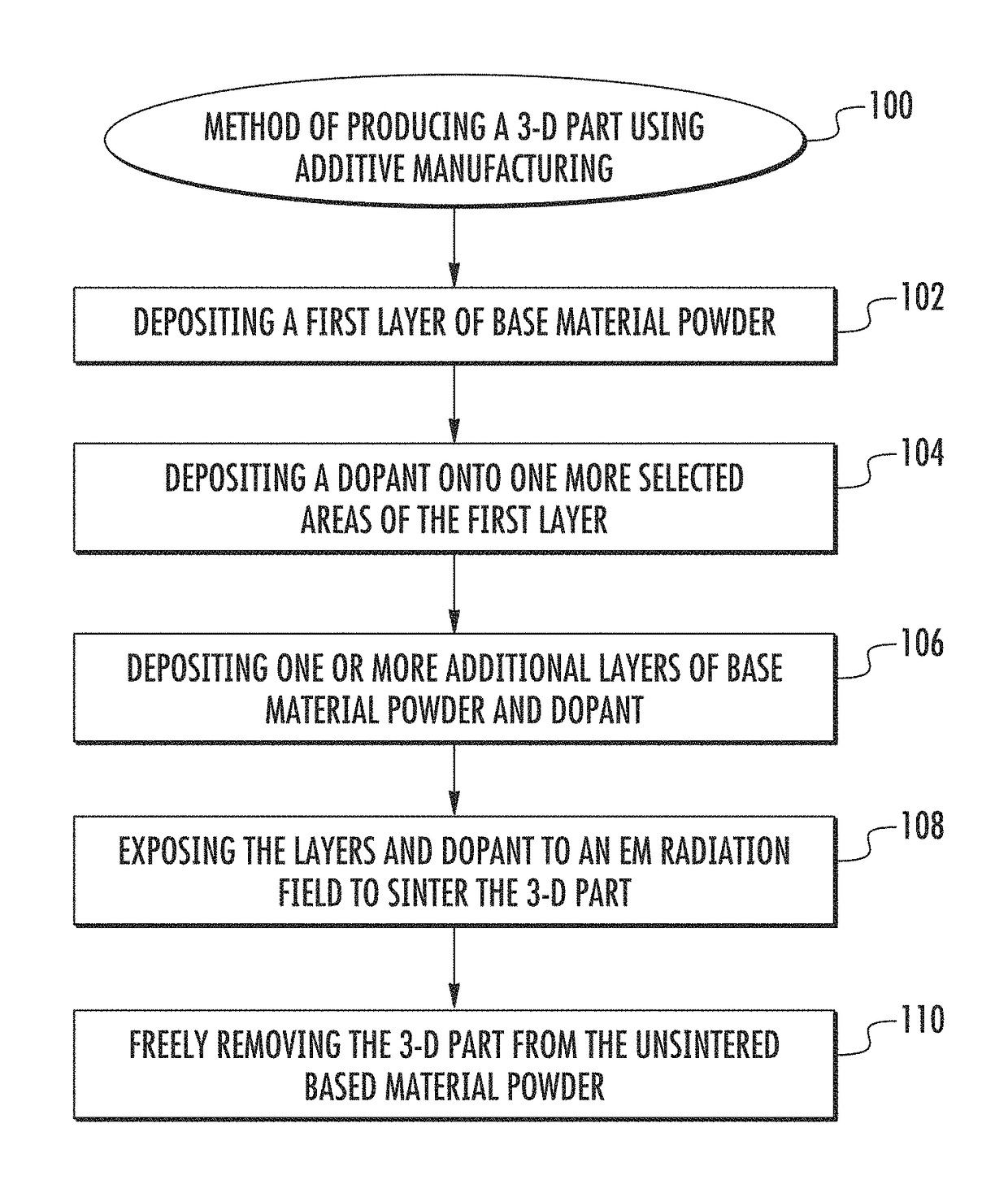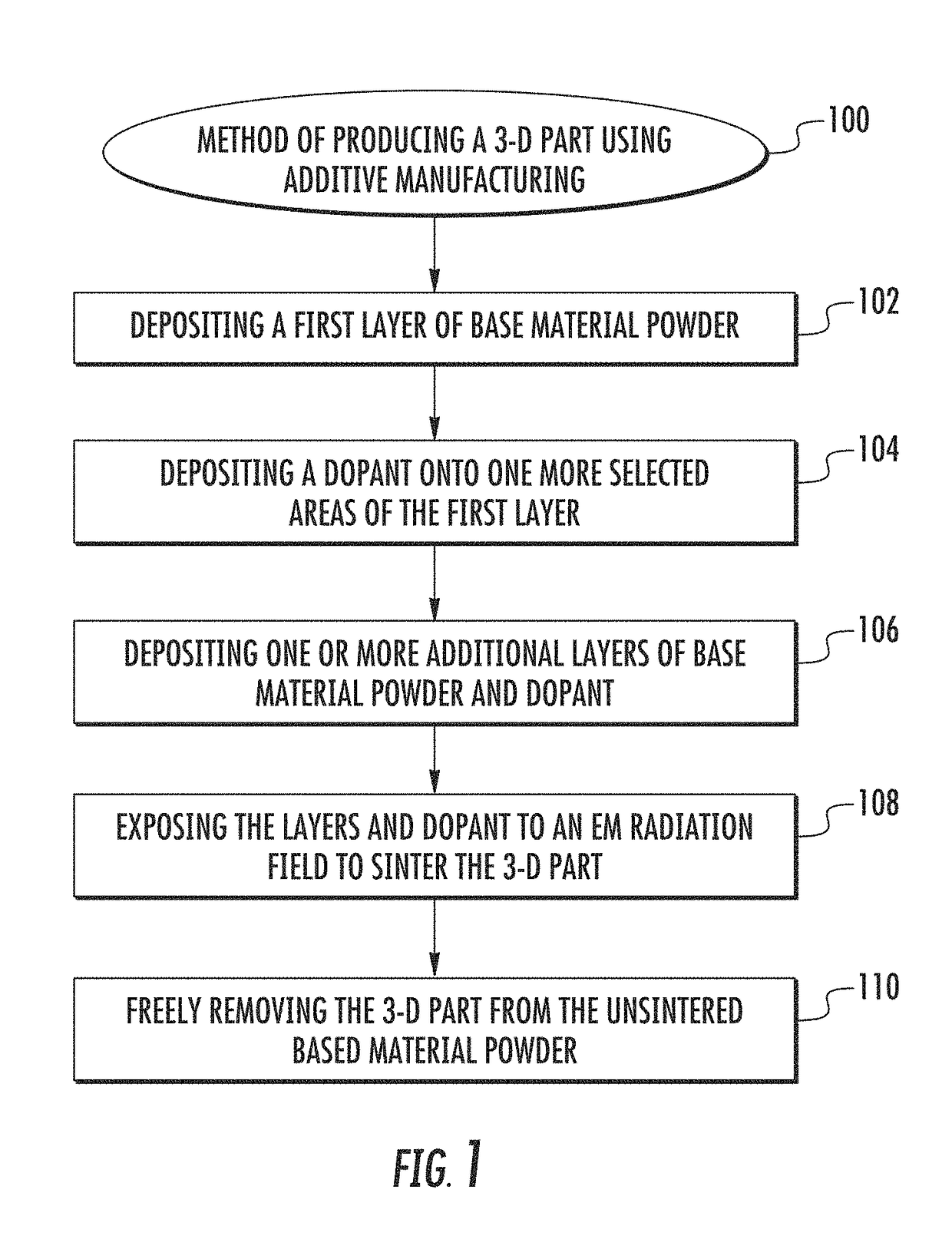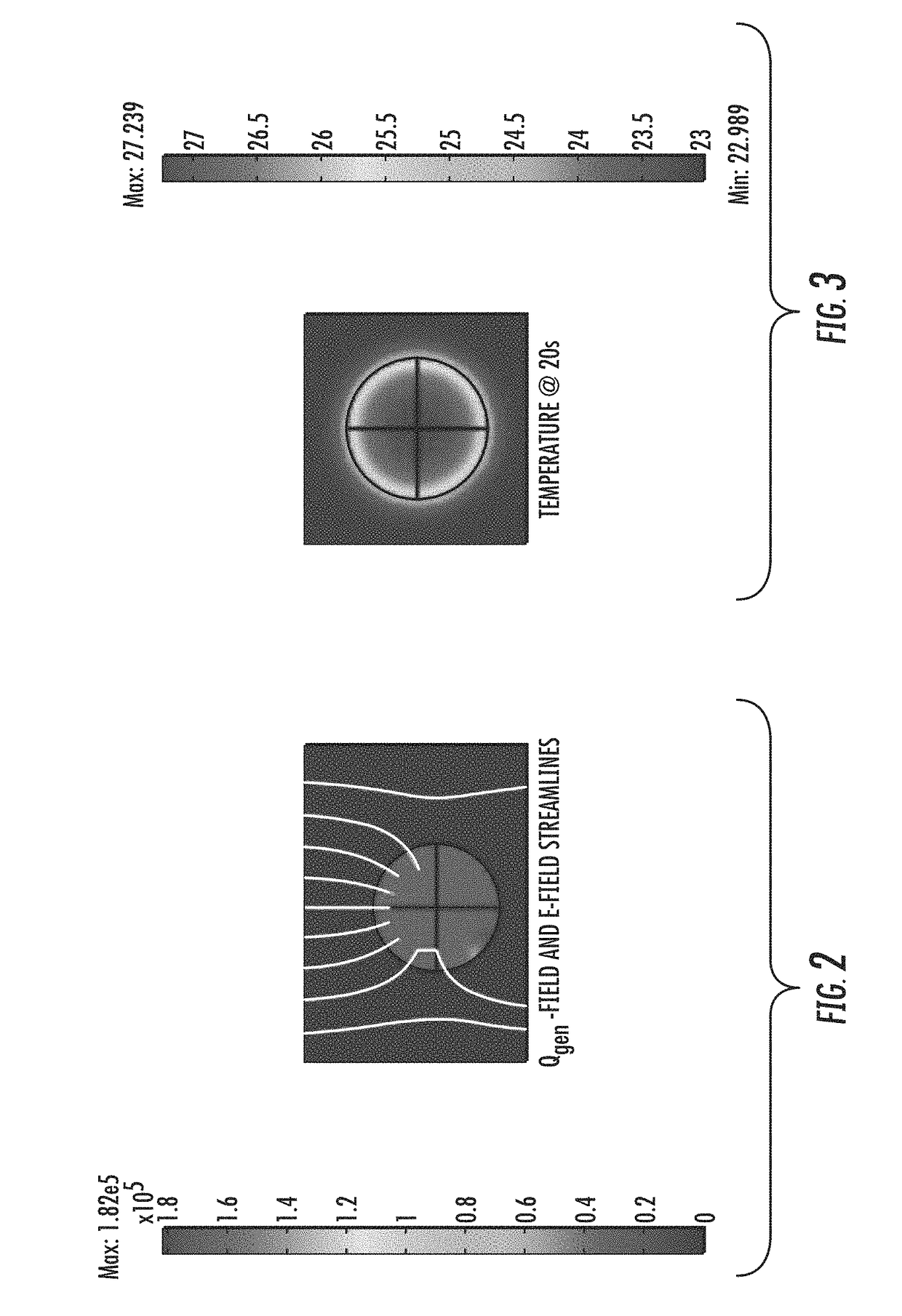Systems and methods for volumetric powder bed fusion
a volumetric powder and system technology, applied in the field of systems and methods for volumetric powder bed fusion, can solve the problems of slow build speed of most am technologies, slow speed and high cost of additively manufacturing parts, and inherently limited in terms of the speed with which they consolidate materials
- Summary
- Abstract
- Description
- Claims
- Application Information
AI Technical Summary
Benefits of technology
Problems solved by technology
Method used
Image
Examples
Embodiment Construction
[0024]Various implementations described herein provide truly volumetric powder bed fusion in which the entire 3D volume of the powder bed is fused synchronously. The implementations shift away from layer-based or 2D fabrication, which inherently limits production speed and other capabilities, such as the capability of building around inserts. Sintered parts are consolidated volumetrically, resulting in at least a 25× reduction in cycle time relative to commercial SLS. In addition, a wider variety of polymer and ceramic materials may be sintered using various implementations of the processes described herein.
[0025]Various implementations described herein utilize electromagnetic energy in the microwave and / or radio frequency (RF) spectrum to volumetrically solidify selective regions of a base material powder bed (e.g., polymer or ceramic). When they are dry, the base materials are relatively transparent to microwave and RF energy, making it very difficult to heat them with those energ...
PUM
| Property | Measurement | Unit |
|---|---|---|
| wavelength frequency | aaaaa | aaaaa |
| dissipation factor | aaaaa | aaaaa |
| dissipation factor | aaaaa | aaaaa |
Abstract
Description
Claims
Application Information
 Login to View More
Login to View More - R&D
- Intellectual Property
- Life Sciences
- Materials
- Tech Scout
- Unparalleled Data Quality
- Higher Quality Content
- 60% Fewer Hallucinations
Browse by: Latest US Patents, China's latest patents, Technical Efficacy Thesaurus, Application Domain, Technology Topic, Popular Technical Reports.
© 2025 PatSnap. All rights reserved.Legal|Privacy policy|Modern Slavery Act Transparency Statement|Sitemap|About US| Contact US: help@patsnap.com



